They seem small—but drawstrings can redefine the style, fit, and feel of any hoodie.
Hoodie drawstrings come in round, flat, tubular, rope, and elastic styles, with current trends highlighting contrast colors, metal tips, oversized lengths, and minimalist finishes.
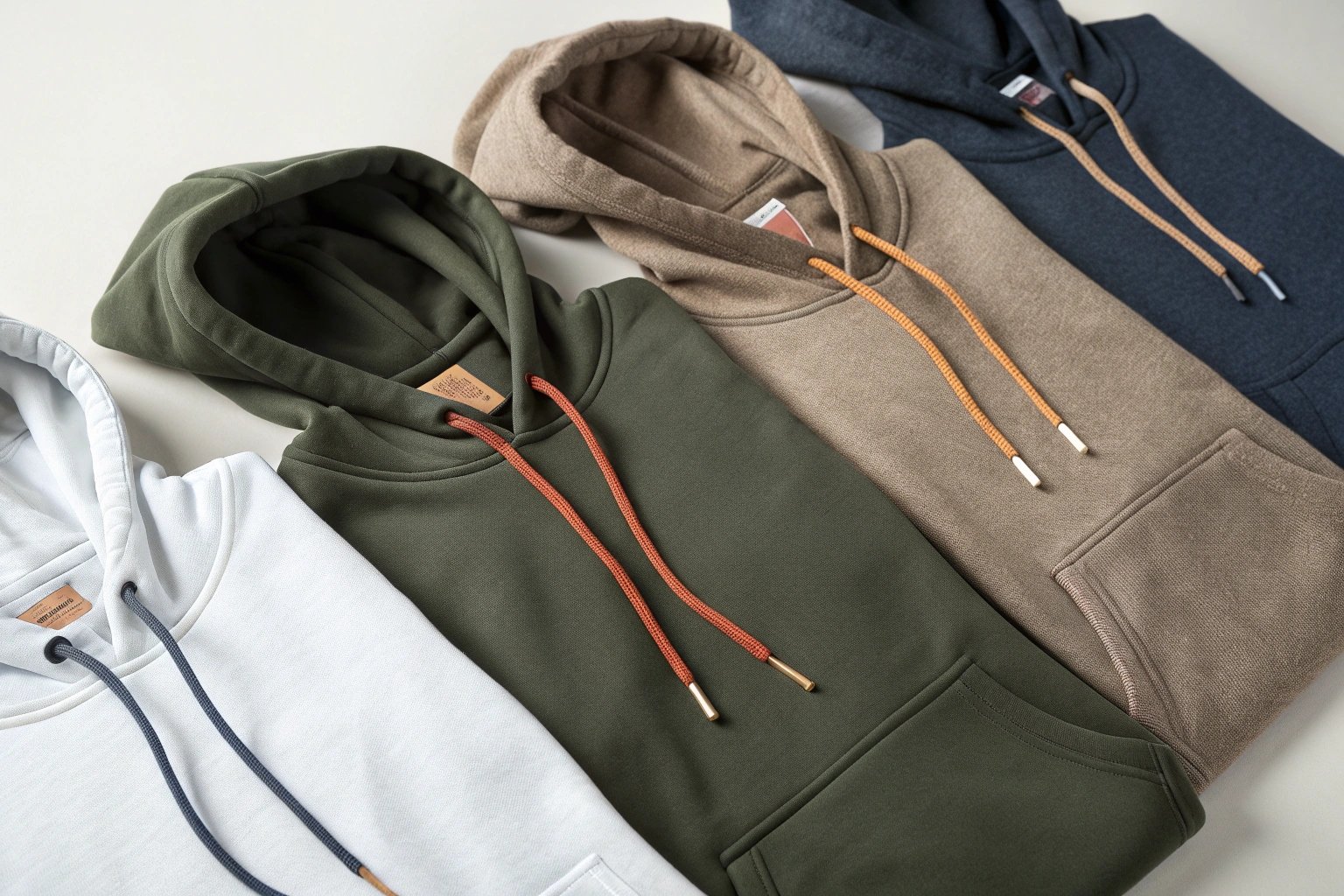
When I first started developing hoodie collections, I treated drawstrings like an accessory to check off. But one client asked us to swap a basic flat cord for a waxed rope cord with metal tips—and the entire look transformed. That’s when I realized: a hoodie’s drawstring isn’t just functional. It’s part of the style, identity, and mood. The right cord can make your hoodie feel athletic, premium, minimal, or bold. Here’s what every designer or buyer should know about hoodie drawstrings, from types to styling trends.
What are the most common types of hoodie drawstrings?
The cord’s shape and material tell a story—of comfort, intention, or trend.
The most common hoodie drawstring types include flat cords, round cords, tubular cords, elastic cords, and rope-style cords—each suited for different looks and wear contexts.
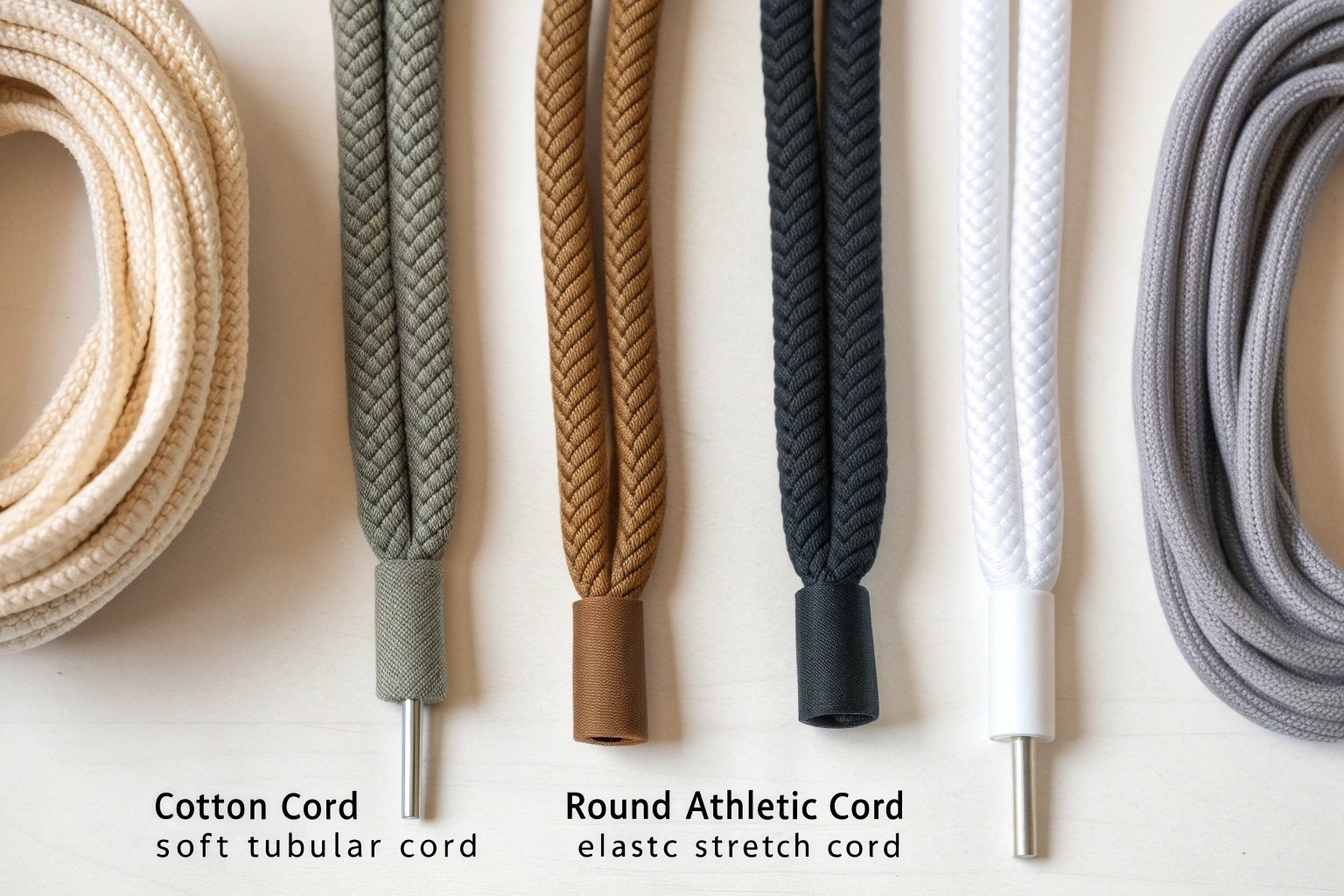
Flat cords are typically made of cotton and give a classic, no-fuss look—great for basics and schoolwear. Round cords feel sportier, often used in performance or athletic styles. Tubular cords are slightly more structured and softer to the touch. We use these often in loungewear because they hold their shape but still feel relaxed.
Rope-style cords are the boldest—thick, textured, and eye-catching. They show up in oversized hoodies, high-end streetwear, and fashion-forward pieces. Then there’s elastic drawcords, which we use in activewear. They stretch, flex, and don’t dangle, making them ideal for workouts and movement.
Each cord type affects not just how a hoodie functions—but how it feels to wear. That’s why we often sample 2–3 drawstring styles for the same hoodie before finalizing production.
How do drawstring tips affect design and perception?
The tip might be small, but it’s the first thing people touch.
Drawstring tips—or aglets—can be plastic, metal, rubber, dipped, or knotted, each influencing how premium or casual the hoodie feels.
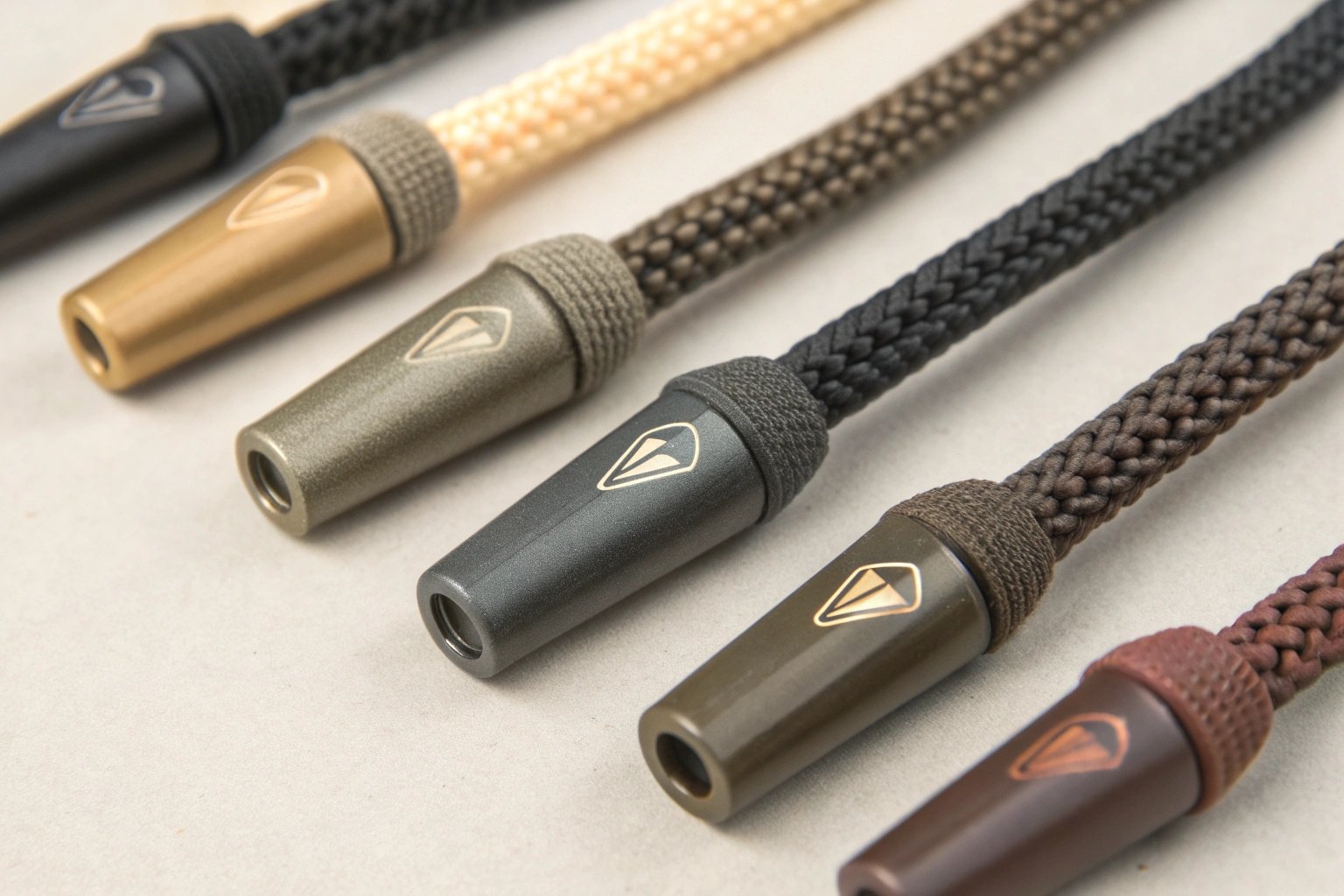
Plastic aglets are the most common—lightweight, inexpensive, and simple. We use these on budget hoodies or kidswear. Metal aglets, on the other hand, instantly elevate the product. They add weight, shine, and a sense of permanence. We’ve had clients laser-etch logos into the tips as subtle branding.
Wax-dipped or heat-sealed tips are trending in artisan or minimal brands. They offer a raw, authentic vibe. And knotted ends—no tip at all—speak to a natural, handmade aesthetic. It’s a great finish for eco-friendly or slow-fashion lines.
When styling photos for a new release, we often highlight the aglet close-up. It’s a detail that makes people feel the quality without needing to explain it.
What are the top hoodie drawstring trends right now?
Trends have moved beyond function—cords are now full-on style elements.
Popular drawstring trends include contrast colors, oversized rope styles, branded tips, internal hidden cords, and toggle stoppers for techwear looks.
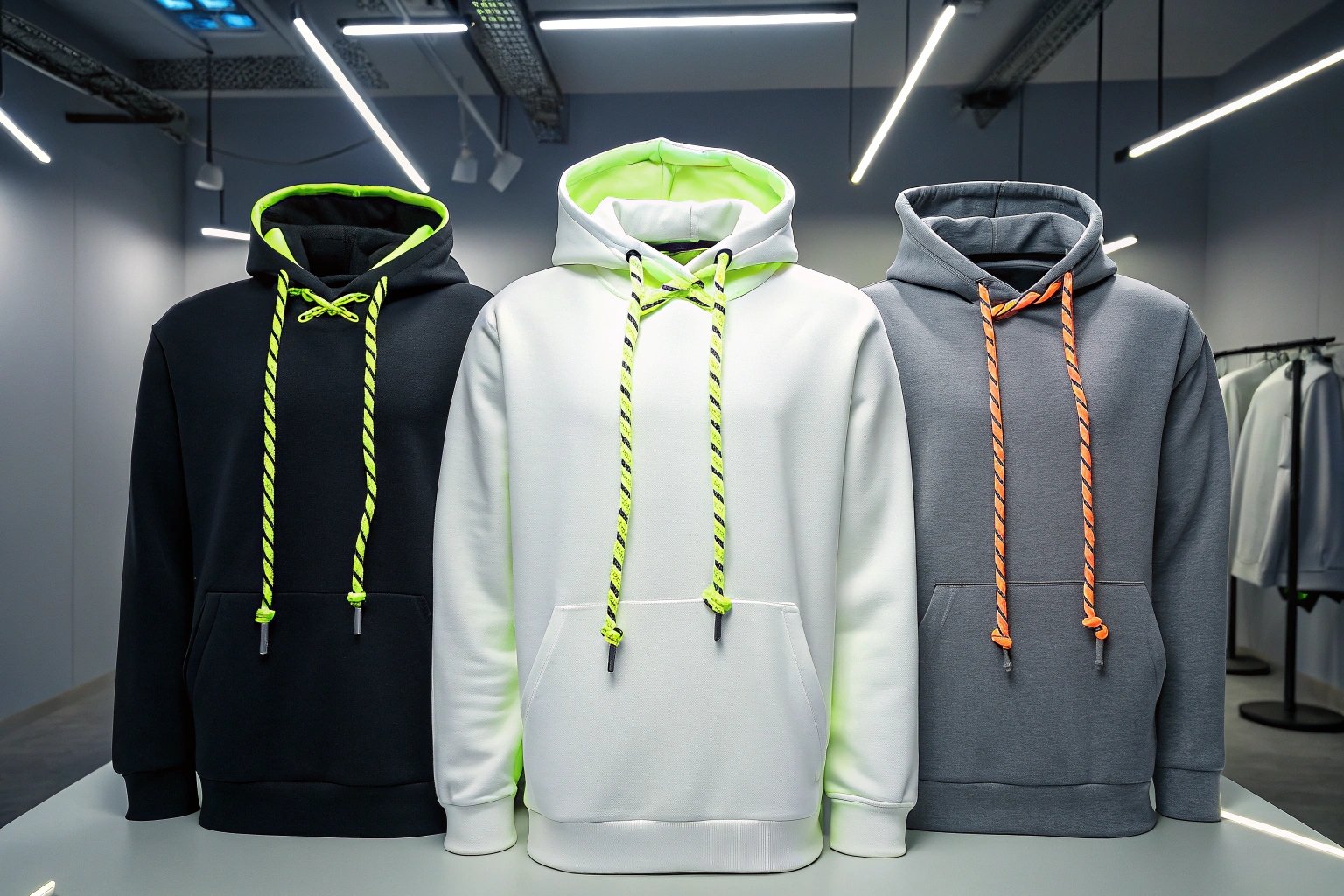
Contrast cords are having a moment. A white hoodie with neon yellow cords or a black hoodie with red tips grabs attention instantly. This look works especially well in Gen Z-focused collections. Oversized drawstrings—especially thick braided or twisted styles—add volume and weight. They work best on drop-shoulder or boxy-fit hoodies.
Branded tips are another trend. Some clients emboss logos onto metal aglets. Others use rubber or silicone ends with initials or brand icons. We’ve also explored toggles and adjusters that lock the cord—great for utility or techwear lines.
A minimal trend that’s growing is the “invisible drawstring”—cords hidden inside the hood with no external exposure. This creates a clean, silent silhouette. We used this recently in a minimalist capsule collection and the visual purity made the pieces stand out in ecom shots.
Which drawstrings pair best with each hoodie type?
Function and silhouette should guide the drawstring you choose.
Different hoodie fits call for different drawstring styles—oversized pieces need heavier cords, while activewear needs stretch and low-bulk details.

Here’s a quick reference:
| Hoodie Type | Ideal Drawstring Style |
|---|---|
| Oversized/Streetwear | Thick rope cord, knotted or dipped tip |
| Cropped/Fashion Fit | Flat cotton cord, tonal color |
| Minimal Techwear | Hidden or internal elastic drawcord |
| Training/Fitness | Elastic cord, sealed or toggle tip |
| Heritage/Basic Fit | Round poly cord, plastic or metal tip |
When we build samples, we test not just cord color, but how it moves when worn. Some cords hold weight well but bunch at the neckline. Others feel soft but lose shape fast. Matching cord weight to hoodie fabric is just as important as getting the color right.
Are drawstrings purely functional or part of the fashion?
Today, they do both—and often lean more style than utility.
Drawstrings started as a way to tighten hoods—but now they’re used to add contrast, movement, or identity to an otherwise simple garment.
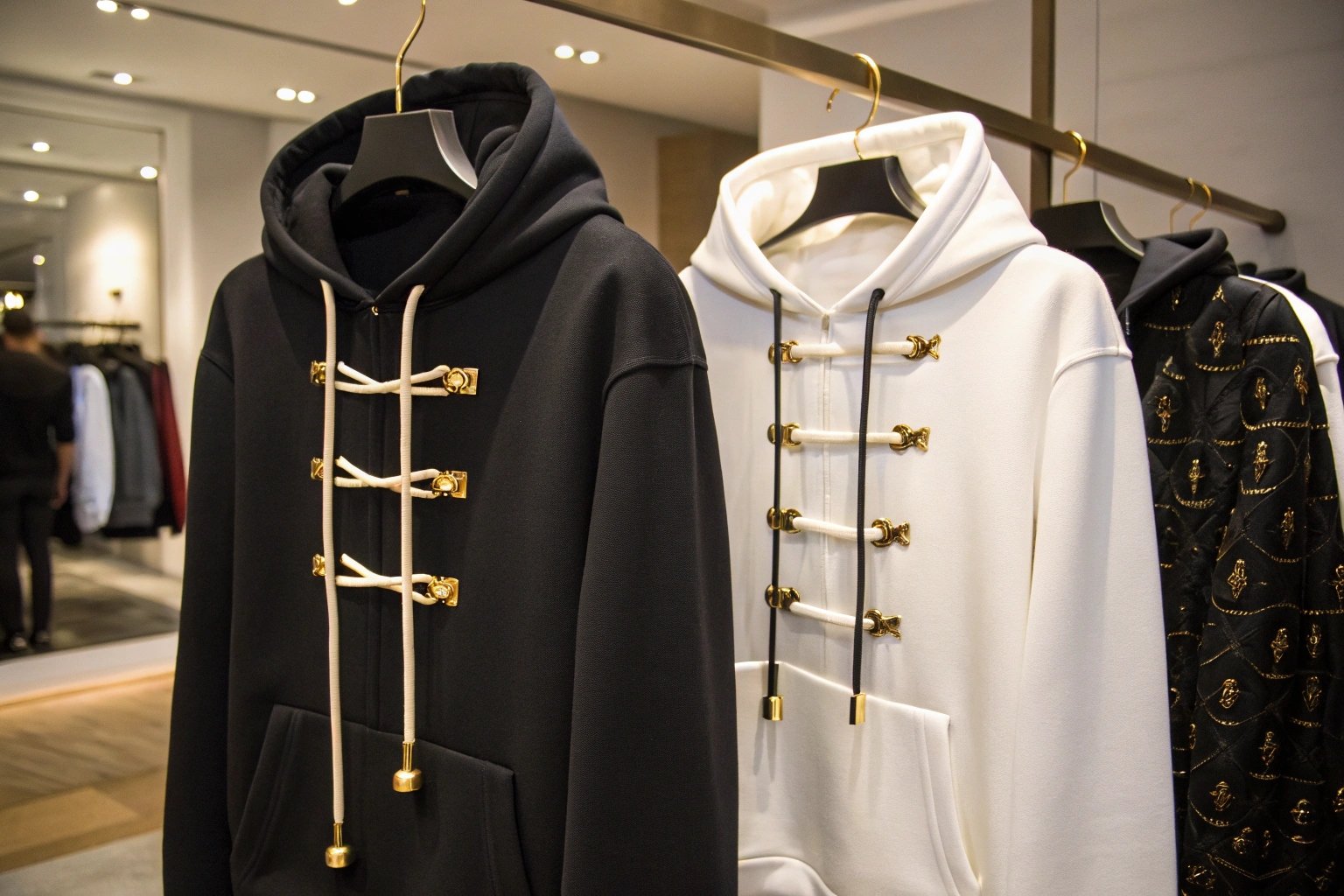
I’ve seen drawstrings used as brand signatures. One streetwear brand we worked with used bold, 1cm-thick cords with gold tips across every hoodie for three years. Customers recognized them instantly. Another high-performance brand removed cords entirely—using internal adjusters to keep a sleek silhouette.
In today’s market, even a basic cord can signal category: streetwear, performance, casual, minimalist. That’s why I always recommend treating drawstrings as design assets—not just sewing afterthoughts.
Conclusion
Drawstrings may be small, but they carry the weight of design, function, and trend. Choose them wisely—and your hoodie tells a sharper, stronger story.

